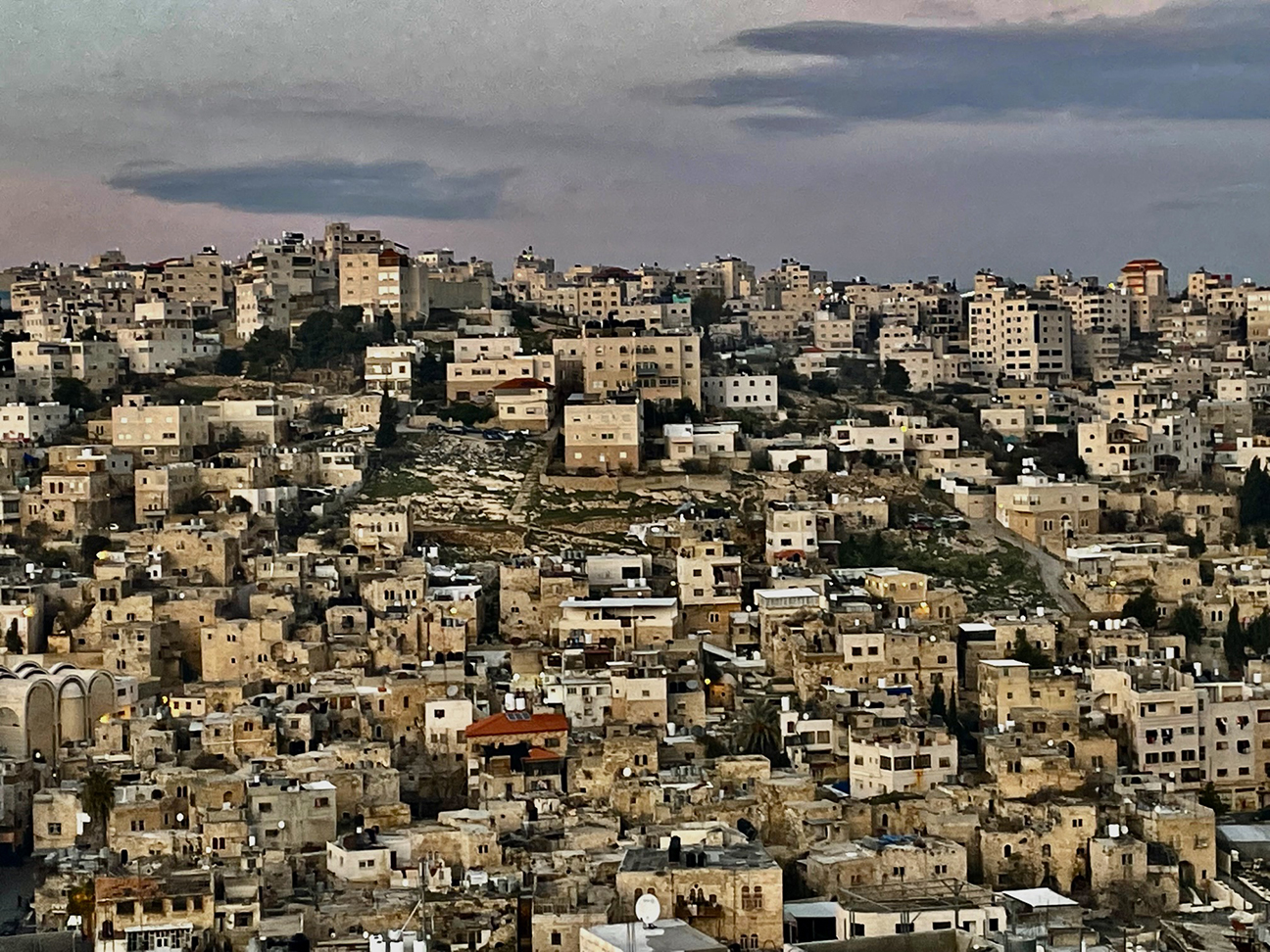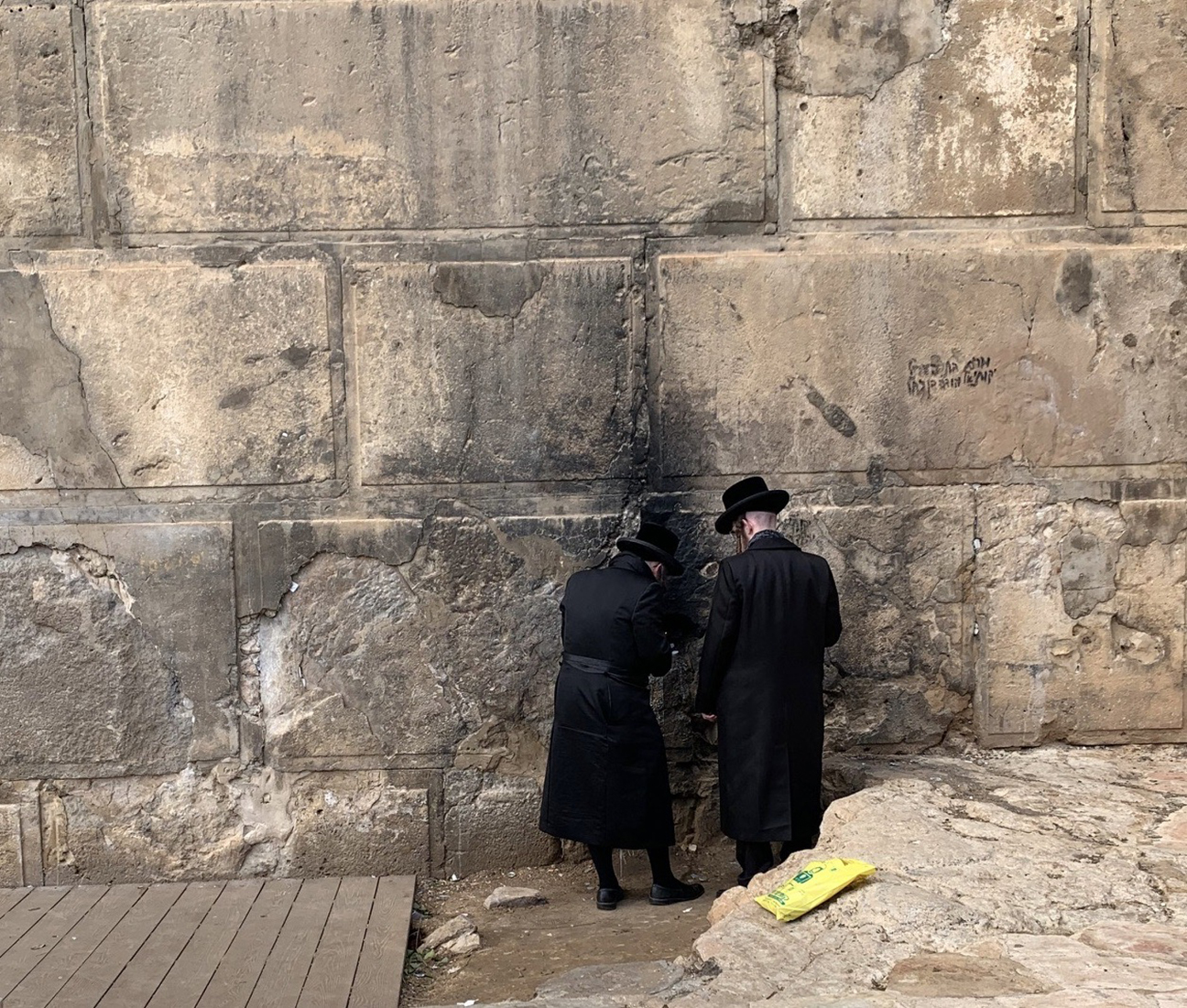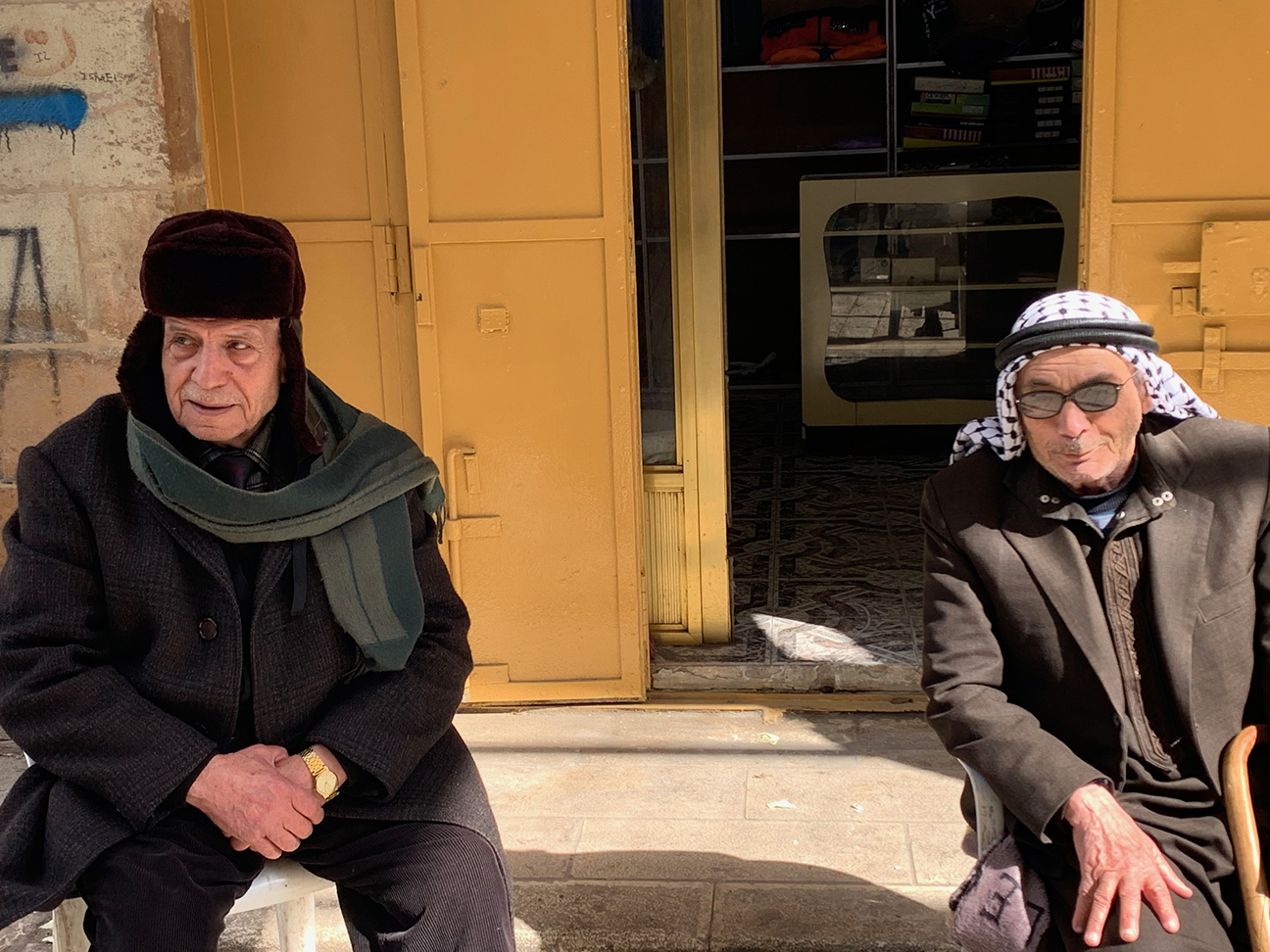| FEATURED
By Royal Calkins
Time and experience have taught me that I am not as astute as I once thought. Therefore, this trifle on my trip to Israel earlier this month will mostly concentrate on the sights rather than the in-your-face religion and politics of the region.
Because too many readers know much more than I do about the place, I’ll only offer glimpses of Tel Aviv and Jerusalem and the centerpiece of the trip, Hebron, the largest city in the Israeli-occupied West Bank.
Just after our small tour group single-filed into downtown Hebron, I thought the day would be cut dramatically short. Two young Palestinian men rushed up to our guide, also a Palestinian, and addressed him in animated fashion. I thought they might be saying we had no business in their ancient city. It turned out that they were only pushing for us to spend some of our shekels in their store nearby.
Enlarge

While there are fancy shops in the modern high-rise shopping mall a block away, poverty prevails on the West Bank. On the surface, the disparity between the Israeli cities and the political island of Hebron was more than a little like the difference between San Diego and Tijuana.
We passed young Israeli army men and women everywhere and crossed through checkpoints. The city of 250,000 souls is surrounded by chain link and razor wire. Before we were allowed to visit the Jewish side of the divided synagogue/mosque perched above the central city, we had to declare ourselves as Christians no matter our personal realities. This is where an Israeli doctor in 1994 used an assault rifle to kill 29 Muslim worshippers and wound more than 100 more, a signature event whose causes and effects are still debated – like everything else.
With only a week to spend in Israel, I’m not equipped to expand much on that. I can tell you that Israel is an absolutely fascinating puzzle, a terribly complicated place that seems likely to become even more fraught in the coming years.
Enlarge

Our tour group was able to question a ranking Palestinian human rights official and a leader of the Israeli settlement movement, whose aim is to establish a single Jewish state under a Jewish-Israeli government. The settlement leader, an American-trained lawyer, said among other things that outsiders make too much of the Jewish-Muslim violence. He told us that compared to the number of gang killings in Chicago and state-sanctioned exterminations in Syria, the death tolls in Israel are insignificant.
That prompted one member of our group, a lawyer from New Zealand, to walk out of the room.
Enlarge

Friends back home had told us we were foolish to go to the West Bank. Too dangerous. The hostel that arranged the trip said our bus was bullet-proof. I saw no evidence of that but never felt endangered anywhere in Hebron. Or elsewhere in Israel for that matter, though it was impossible to miss the news about another deadly gun battle to the north of Hebron.
From our apartment one day we heard a protest march, mostly young adults upset by the hard-right Netanyahu administration’s restructuring of the judicial system and its stance on the Palestinians. I noticed no other signs of resistance.
Our main tour guide was a Berkeley-educated historian, a long-time peace activist in Israel and a devout Jew. His account of Israeli history was exhaustive and exhausting. He surprised us with dual narratives. First the Jewish point of view and then the Palestinian perspective, fairly presented. I can’t expand on that because the accents of some speakers were too much for my elderly ears. I feel more comfortable writing about the food, lodging and sightseeing. Call me timid.
Enlarge

The food. Fabulous. I once thought of a Mediterranean diet as a form of torture, hummus as a type of spackle. What a fool. I cannot identify most of what I had for lunch one day in Jerusalem, the pots of colorful vegetables and spices and roots and whatevers, but I ate quickly so I wouldn’t have to share.
In Hebron we shared a lunch prepared by a Palestinian family. It was a lovely chicken dish that had simmered in spices all morning. Yet another guide told us the family makes its living off these lunches.
We ate just as well in Tel Aviv, but I made the mistake of buying buttermilk to go with my breakfast cereal because there was no English fine print under the Hebrew script on the carton. On the streets and in the stores, I heard almost no English though almost everyone speaks it. The Israeli leadership declared Hebrew the national language when the nation was carved out of the desert in 1948 and it worked, though some argue that is isolating the country.
Did you know that Hebrew is read right to left, without vowels? As someone explained about how the language is taught, “Vowels are for children.” Most restaurants offer English-language menus on request but signs and coming-attraction posters are of little use to us monoglots. Ditto in the West Bank where Arabic prevails.
Enlarge

Highlights. Too many to list. It was a splendid trip full of surprises, technicolor markets filled with exotic smells and shoppers who didn’t care about the wide-eyed visitors who kept getting in the way. Olives in 15 colors, pyramids of spices, racks of fish so fresh that you couldn’t smell them.
There are things to stare at everywhere, most within a short train ride from wherever you start, coaches with that new-train smell running smoothly on trains that didn’t make that Amtrak clack-clack-clack.
Competing with Hebron for the highlight crown was the old city of Jerusalem, maybe the holiest place on the planet. That is if you ignore the fortress walls with slits for arrows, and all those souvenir shops overflowing with scarves and postcards.
We found refuge from the old city crowds in a little-known Austrian coffeehouse on a terrace, but the crowds were otherwise inescapable. It was a seriously cold February day and we were glad not to fight the throngs that May or October must bring. Everywhere there were clusters of Balkan-looking women wrapped in dull wool and beautiful groups of Africans in flowery silk and headwear that clashed with the limestone walls and walkways.
The best part of the visit came when the sun set Friday evening to start Shabat, when most commercial activities cease for a day. That’s when the ultra Jewish devout gather at the Wailing Wall, also known as the Western Wall. On one side of a lesser barrier, women with wigs covering their natural hair stood in silence. On the other side were the men and boys, all in black except for their crisp white shirts, stiff-brimmed hats or round, fur headwear the size of birthday cakes. Many men read the Torah while walking, chanting or rocking back and forth.
Enlarge

I estimated there were at least 1,000 men. I would have loved to have taken pictures but I was told I quickly would have been drowned in misfortune. Lots of rules in Israel. Still stumble-bummed myself into the midst of it all, my San Francisco Giants hat as out of place as a Hells Angel in Pebble Beach.
At the same time, 25 or so Israeli soldiers danced in a circle at the edge of the devout. The men and women in fatigues, some carrying rifles, were singing and cheering. There had been attacks in the city that week. Six Israelis shot down in a synagogue. Three more run down by a suicide driver. Some retaliation. I thought the soldiers might have been better placed on the perimeter, but they seemed to know what they were doing.
On another day we took a bus to the super-salted Dead Sea south of Jerusalem. We floated around and bought souvenirs. From the snack bar, we were excited to be able to see Jordan and a tiny corner of Egypt across the water.
Bedouin goat herders from the tin shack settlements nearby were there with colorfully outfitted camels. Pose with the creatures for a pittance.
Enlarge

But most of our time was spent in Tel Aviv, a lovely city that seems older than it is. We walked along the beach fronting the Mediterranean. No swimming allowed until the lifeguards return in the spring.
Downtown is a skyscraper showplace. Construction cranes were everywhere like giant orange storks. Elsewhere boxy Bauhaus architecture dominates along the well-treed streets.
In many ways, Tel Aviv is Jerusalem’s opposite. It has a Western vibe and a largely high-tech workforce. Young men and women zip along the flat streets on Vespas and those motorized stand-on scooters that unfortunately don’t make enough sound to warn pedestrians of their arrival.
My favorite part was the Florentin district, where block after block of businesses have been blasted with oversized graffiti and bright, giant murals, some of which could qualify as art.
I’m glad we went. And I wish I had studied the history there much more vigorously, but I’m glad that from now on it may make somewhat more sense.
Enlarge

Have something to say about this story? Send us a letter or leave a comment below.